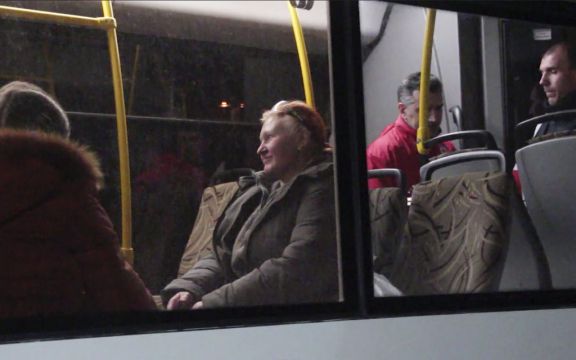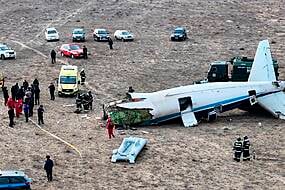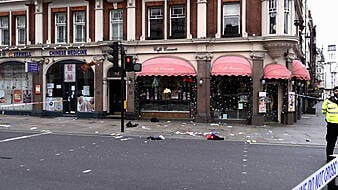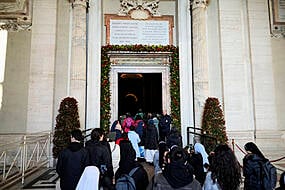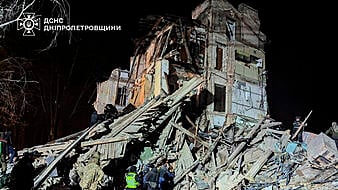After nearly two months of siege, civilians holed up at a steel plant in the Ukrainian city of Mariupol began to be evacuated over the weekend.
Local officials said people sheltering elsewhere in the besieged city were allowed to leave on Monday.
Video posted online on Sunday by Ukrainian forces showed elderly women and mothers with small children climbing over a steep pile of debris out of the sprawling Azovstal steel plant’s rubble and eventually boarding a bus.
More than 100 civilians were expected to arrive in the Ukrainian-controlled city of Zaporizhzhia on Monday, Ukrainian President Volodymyr Zelensky said on Sunday.
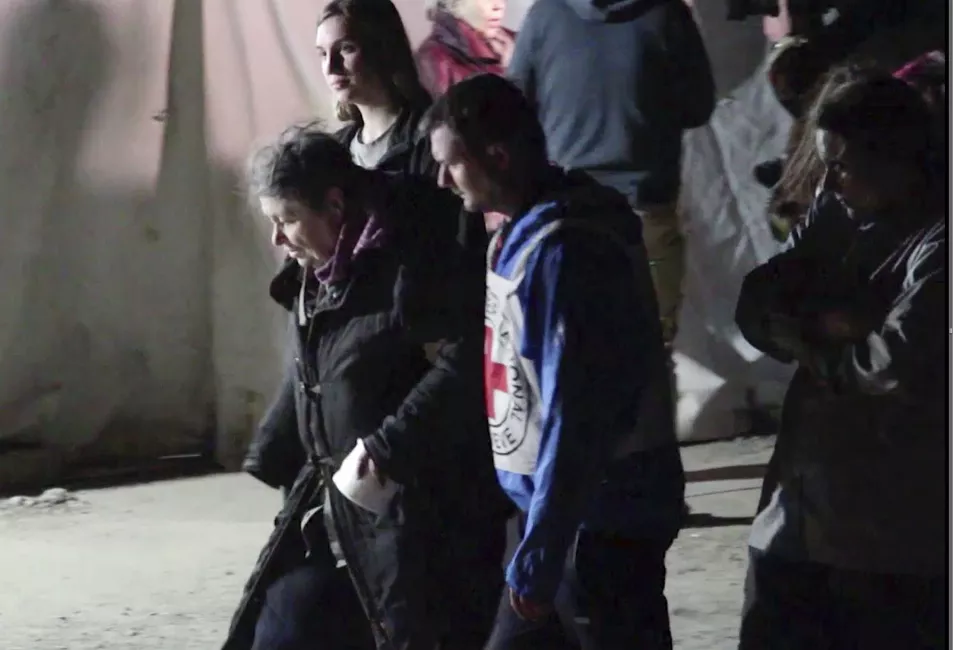
“Today, for the first time in all the days of the war, this vitally needed (humanitarian) corridor has started working,” Mr Zelensky said in a pre-recorded address published on his Telegram messaging channel.
There were worries about the safety of evacuees. People fleeing Russian-occupied areas in the past have described their vehicles being fired on, and Ukrainian officials have repeatedly accused Russian forces of shelling agreed-upon evacuation routes.
A Ukrainian defender of the steel plant urged groups like the UN and the Red Cross to ensure the safety of those being evacuated.
Sviatoslav Palamar, deputy commander of the Azov Regiment, told the Associated Press in an interview that there should be guarantees from “a third party – politicians, world leaders – who will cooperate to negotiate with Russians to extract us from here”.
Another of the plant’s defenders said Russian forces resumed shelling the plant on Sunday as soon as the evacuation of a group of civilians was completed.
Denys Shlega, commander of the 12th Operational Brigade of Ukraine’s National Guard, said in a televised interview on Sunday night that several hundred civilians remain trapped alongside nearly 500 wounded soldiers and “numerous” dead bodies.
“Several dozen small children are still in the bunkers underneath the plant,” Mr Shlega said.

As many as 100,000 people may still be in Mariupol, including an estimated 2,000 Ukrainian fighters beneath the sprawling, Soviet-era steel plant — the only part of the city not occupied by the Russians.
Mariupol, a port city on the Sea of Azov, has seen some of the worst suffering.
A maternity hospital was hit in a Russian air strike in the opening weeks of the war, and hundreds of people were reported killed in the bombing of a theatre.
The city is a key target because of its strategic location near the Crimean Peninsula, which Russia seized from Ukraine in 2014.
Mr Palamar, the Ukrainian commander, told AP on Sunday that it has been difficult even to reach some of the wounded in the steel plant.
“There’s rubble. We have no special equipment. It’s hard for soldiers to pick up slabs weighing tons only with their arms,” he said. “We hear voices of people who are still alive (inside shattered buildings).”

UN humanitarian spokesman Saviano Abreu said civilians arriving in Zaporizhzhia, about 140 miles northwest of Mariupol, would receive immediate humanitarian support, including psychological services.
A Doctors Without Borders team was at a reception centre for displaced people in Zaporizhzhia, in preparation for the UN convoy’s arrival.
In his nightly address on Sunday, Mr Zelensky accused Moscow of waging “a war of extermination”, saying Russian shelling had hit food, grain and fertiliser warehouses, and residential neighbourhoods in the Kharkiv, Donbas and other regions.
He also said more than 350,000 people have been evacuated during the war from combat zones thanks to humanitarian corridors pre-agreed with Moscow.
“The organisation of humanitarian corridors is one of the elements of the negotiation process which is ongoing,” he said.
Russian forces embarked on a major military operation to seize parts of southern and eastern Ukraine after failing to capture the capital Kyiv.
Ukrainian forces are fighting their offensive village-by-village while civilians flee air strikes and artillery shelling.
Ukrainian intelligence officials accused Russian forces of seizing medical facilities to treat wounded Russian soldiers in several occupied towns, and of destroying medical infrastructure.
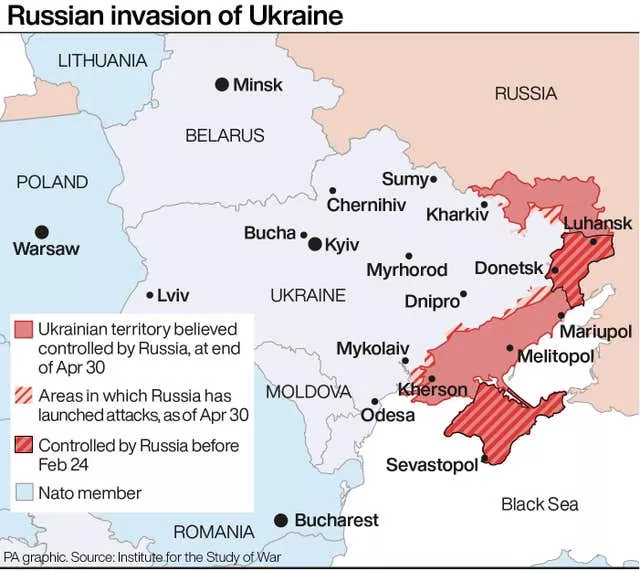
A full picture of the battle unfolding in eastern Ukraine is hard to capture.
The fighting makes it dangerous for reporters to move around, and both sides have introduced tight restrictions on reporting from the combat zone.
But western military analysts have suggested Russia’s offensive is progressing more slowly than planned.
So far, Russian troops and Russian-backed separatists appear to have made only minor gains since the eastern offensive began last month.
The British Ministry of Defence said in a daily briefing on Monday that it believes more than a quarter of all troops Russia has deployed in Ukraine are “combat ineffective”.
That phrase refers to a military’s ability to wage war, which is affected by losing soldiers to wounds and death and having equipment damaged or destroyed.
The British military believes Russia has committed more than 120 so-called “battalion tactical groups” into the war since February, which represents 65% of all of Moscow’s combat strength.
Latest Defence Intelligence update on the situation in Ukraine - 02 May 2022
Find out more about the UK government's response: https://t.co/ZuMXTmNRyd
🇺🇦 #StandWithUkraine 🇺🇦 pic.twitter.com/S7E6h4WTgM— Ministry of Defence 🇬🇧 (@DefenceHQ) May 2, 2022
Some of Russia’s most elite forces “have suffered the highest levels of attrition”, the ministry said in its briefing on Twitter.
“It will probably take years for Russia to reconstitute these forces.”
Hundreds of millions of dollars in military assistance has flowed into Ukraine during the war, but Russia’s vast armouries mean Ukraine still needs massive support.
With plenty of firepower still in reserve, Russia’s offensive could intensify.
Overall, the Russian army has an estimated 900,000 active duty personnel, and a much larger air force and navy.
Meanwhile, recent weeks have seen a number of fires and explosions in Russian regions near the border.
On Sunday, an explosive device damaged a railway bridge in the Kursk region, which borders Ukraine, and a criminal investigation has been started, the region’s government reported.
